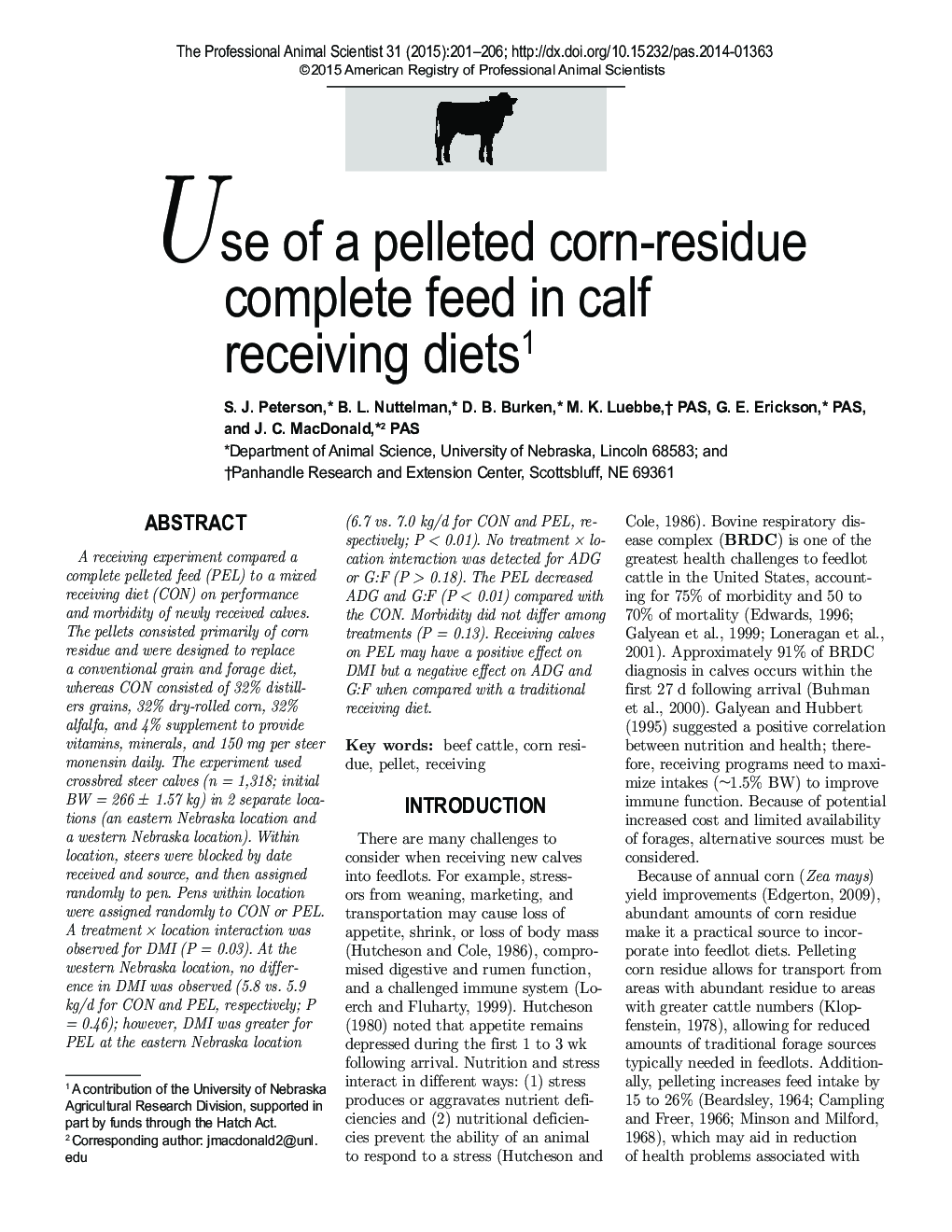| Article ID | Journal | Published Year | Pages | File Type |
|---|---|---|---|---|
| 10161807 | The Professional Animal Scientist | 2015 | 6 Pages |
Abstract
A receiving experiment compared a complete pelleted feed (PEL) to a mixed receiving diet (CON) on performance and morbidity of newly received calves. The pellets consisted primarily of corn residue and were designed to replace a conventional grain and forage diet, whereas CON consisted of 32% distillers grains, 32% dry-rolled corn, 32% alfalfa, and 4% supplement to provide vitamins, minerals, and 150 mg per steer monensin daily. The experiment used crossbred steer calves (n = 1,318; initial BW = 266 ± 1.57 kg) in 2 separate locations (an eastern Nebraska location and a western Nebraska location). Within location, steers were blocked by date received and source, and then assigned randomly to pen. Pens within location were assigned randomly to CON or PEL. A treatment à location interaction was observed for DMI (P = 0.03). At the western Nebraska location, no difference in DMI was observed (5.8 vs. 5.9 kg/d for CON and PEL, respectively; P = 0.46); however, DMI was greater for PEL at the eastern Nebraska location (6.7 vs. 7.0 kg/d for CON and PEL, respectively; P < 0.01). No treatment à location interaction was detected for ADG or G:F (P > 0.18). The PEL decreased ADG and G:F (P < 0.01) compared with the CON. Morbidity did not differ among treatments (P = 0.13). Receiving calves on PEL may have a positive effect on DMI but a negative effect on ADG and G:F when compared with a traditional receiving diet.
Related Topics
Life Sciences
Agricultural and Biological Sciences
Animal Science and Zoology
Authors
S.J. Peterson, B.L. Nuttelman, D.B. Burken, M.K. PAS, G.E. PAS, J.C. PAS,
